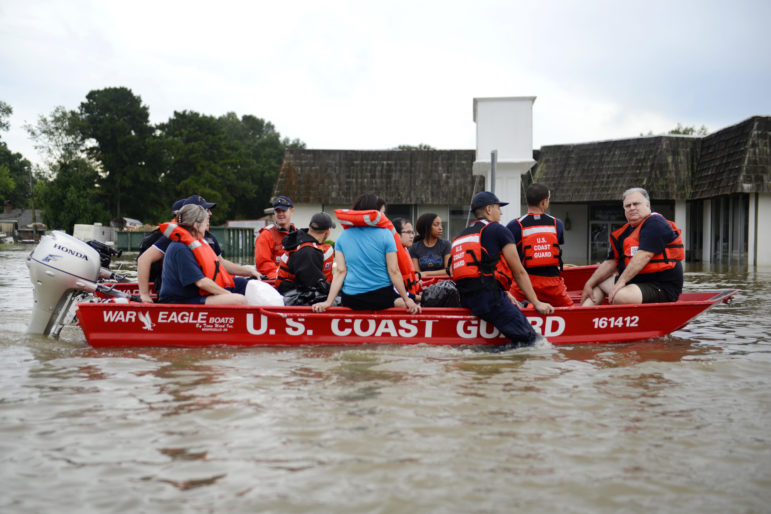
Living in southern Louisiana without flood insurance is a bigger gamble after this news from researchers at the National Center for Atmospheric Research: If the climate continues to warm, the big thunderstorms that cause flash flooding probably will become more frequent and intense, dropping up to 70 percent more rain.
Louisiana’s state climatologist, Barry Keim, agreed with the findings in the study published last week in the journal Nature Climate Change.
“The bottom line is: If you live in moisture-laden places like this, and you increase the temperature even a little bit, you’ll see an increase in thunderstorm activity,” he said.
The report said ocean and air temperatures would continue to rise if greenhouse gases, the driver behind the warming climate, are not reduced. That would increase air moisture in the Southeast, including the Gulf Coast. At the same time, the central part of the country and the Pacific Northwest would see less rain.
“We’re already the wettest state in the lower 48. We don’t need more and more intense storms here.”—Barry Keim, Louisiana’s state climatologist
Louisiana may be located in Hurricane Alley, but records show the most common cause of flooding here is rain.
Flash floods caused by heavy rains are projected to be responsible for about $8 billion in damage in the metro area in the next 50 years, according to researchers for the Urban Water Plan. That’s based on records from the Federal Emergency Management Agency.
Louisiana gets about six feet of rain a year, which seldom comes in the form of long, gentle showers. Instead, it often arrives in sudden, brutal thunderstorms spawned by the heat and moisture of the nearby Gulf of Mexico. They dump blinding sheets of water that can overwhelm urban drainage systems and cause rural creeks and rivers to jump their banks.
Two such storms struck Southeastern Louisiana this year.
In March, North Shore parishes saw catastrophic flooding from intense rainstorms over several days. The storm cost the state more than $10 million for emergency response.
In August, the Baton Rouge area was hammered for three days with as much as 30 inches of rain, causing 13 deaths and about $8.7 billion in property damages. The storm cost $660 million in federal disaster response.
About 58,000 homes were damaged. Only one in eight were covered by flood insurance, mainly because they were not in federally established flood zones where insurance is required to get a mortgage.
Ironically, two months later, FEMA issued new flood maps that removed many homes around New Orleans from flood zones. State and federal officials recommend everyone carry those policies even if it’s not required.
Scientists saw a direct link between the warming climate and the Baton Rouge storms, pointing to research indicating the risks of such events has increased by 40 percent as the oceans warmed.
Keim said heat was a major factor in that historic rainfall. Record surface temperatures in the Gulf increased the amount of water vapor rising into the atmosphere. And high air temperatures increased the capacity of the air to hold water.
However, the factors that caused those storms to stall over the Baton Rouge area for three days are not linked to climate change, he said.
The new report, Keim said, should worry local flood planners because it adds to the growing climate science projecting more moisture in the air.
“The conclusions of this paper are not good news for us,” said. “We’re already the wettest state in the lower 48. We don’t need more and more intense storms here.”
